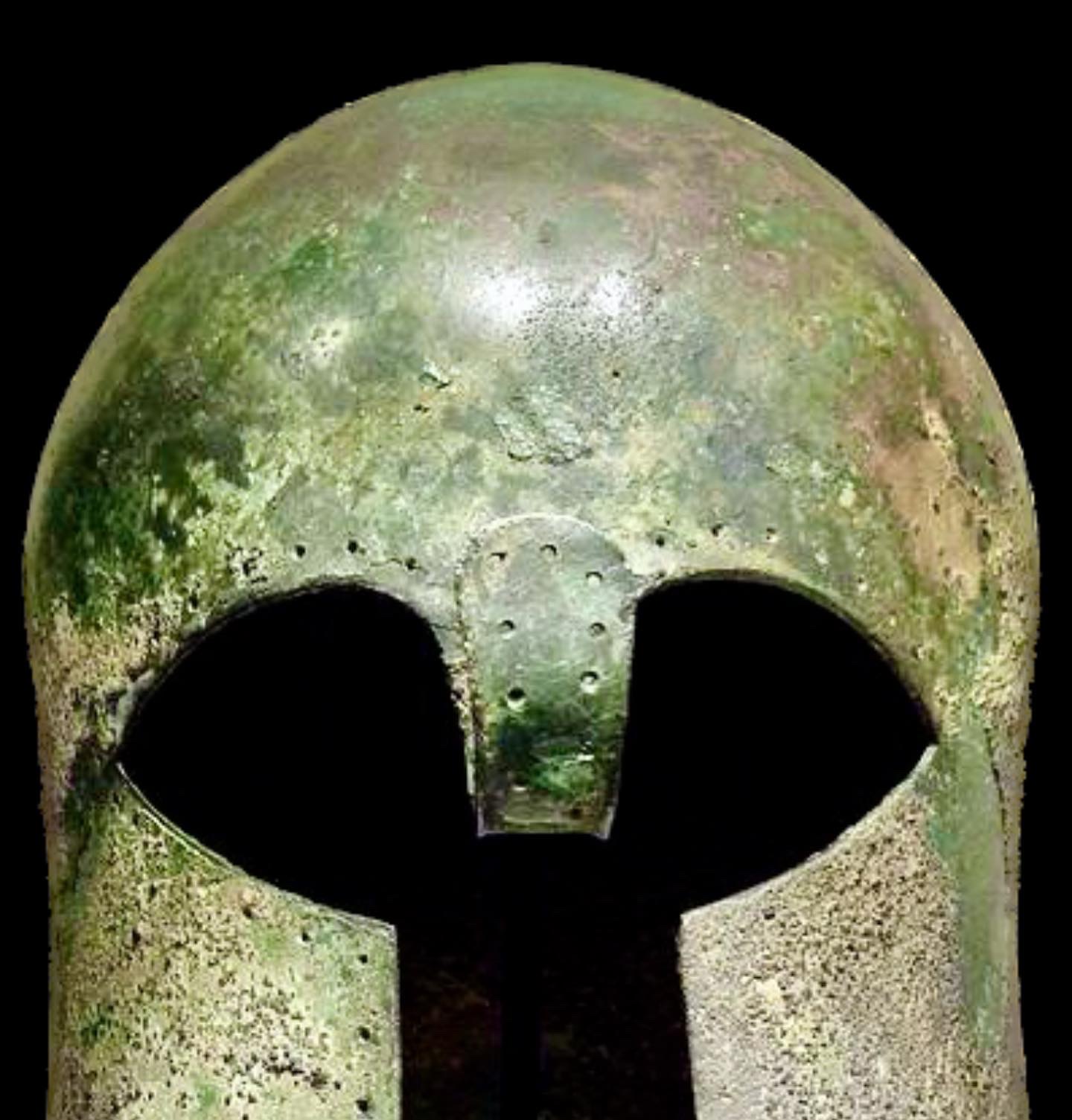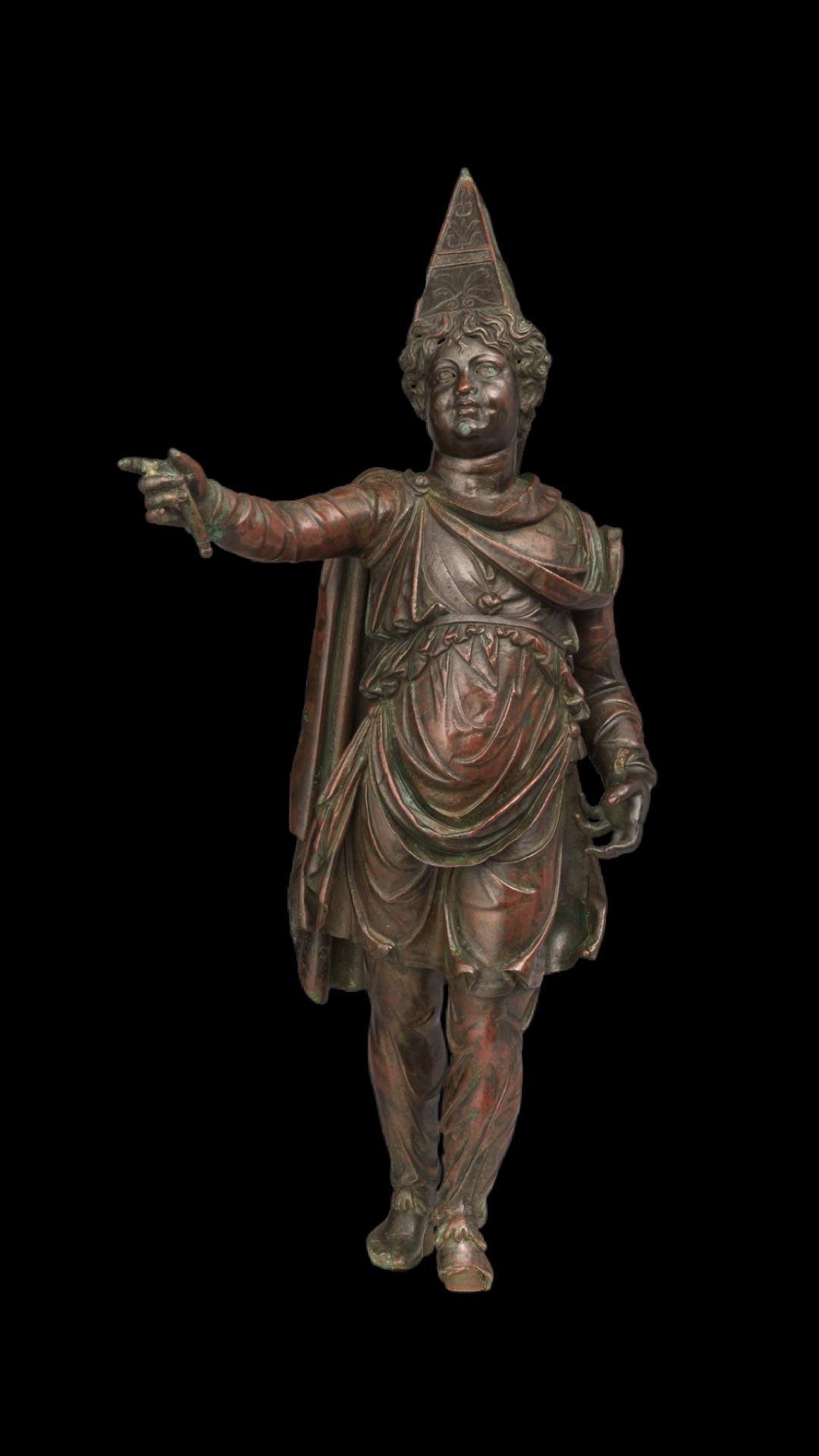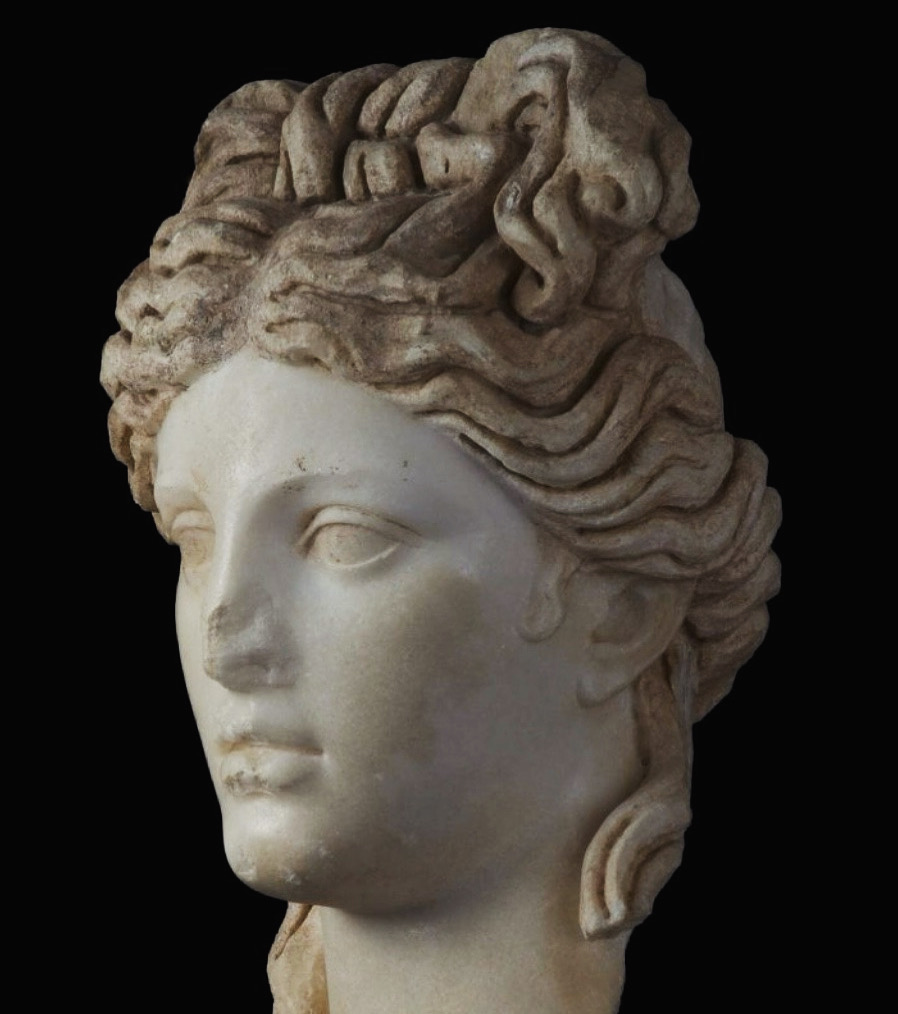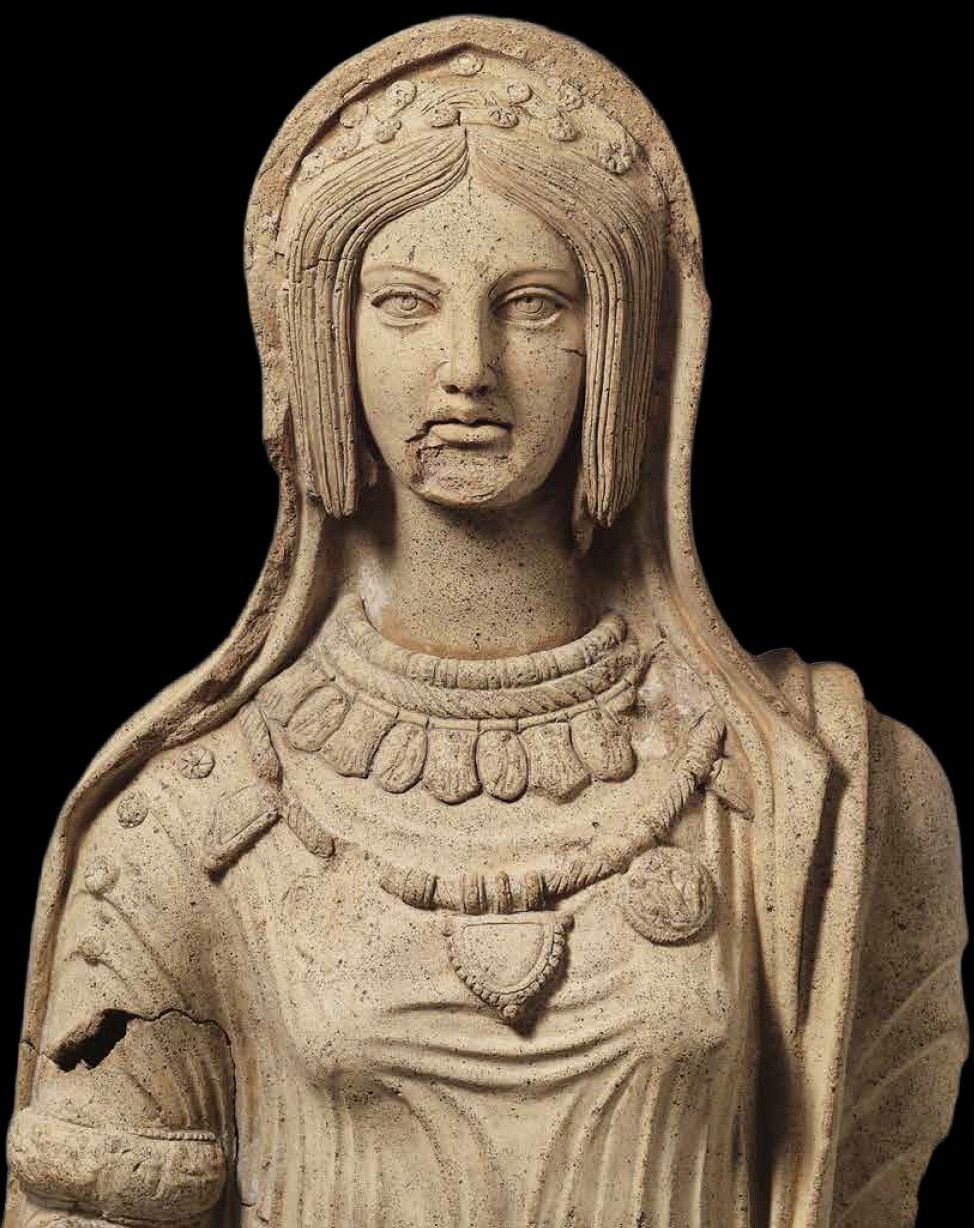Ever wonder why the nose-pieces of Greek helmets are sometimes snapped off or bent out of shape?
Nose guards on Corinthian helmets don’t bend easily…they tend to be thicker than the rest of the helmet, to protect that delicate cartilaginous protrusion beneath, and when they are bent and missing it’s no accident and nothing to do with pulling the helmet off a warrior’s head after a bad blow, but actually one of the weirder (and wonderful) aspects of religious and dedicatory practices.
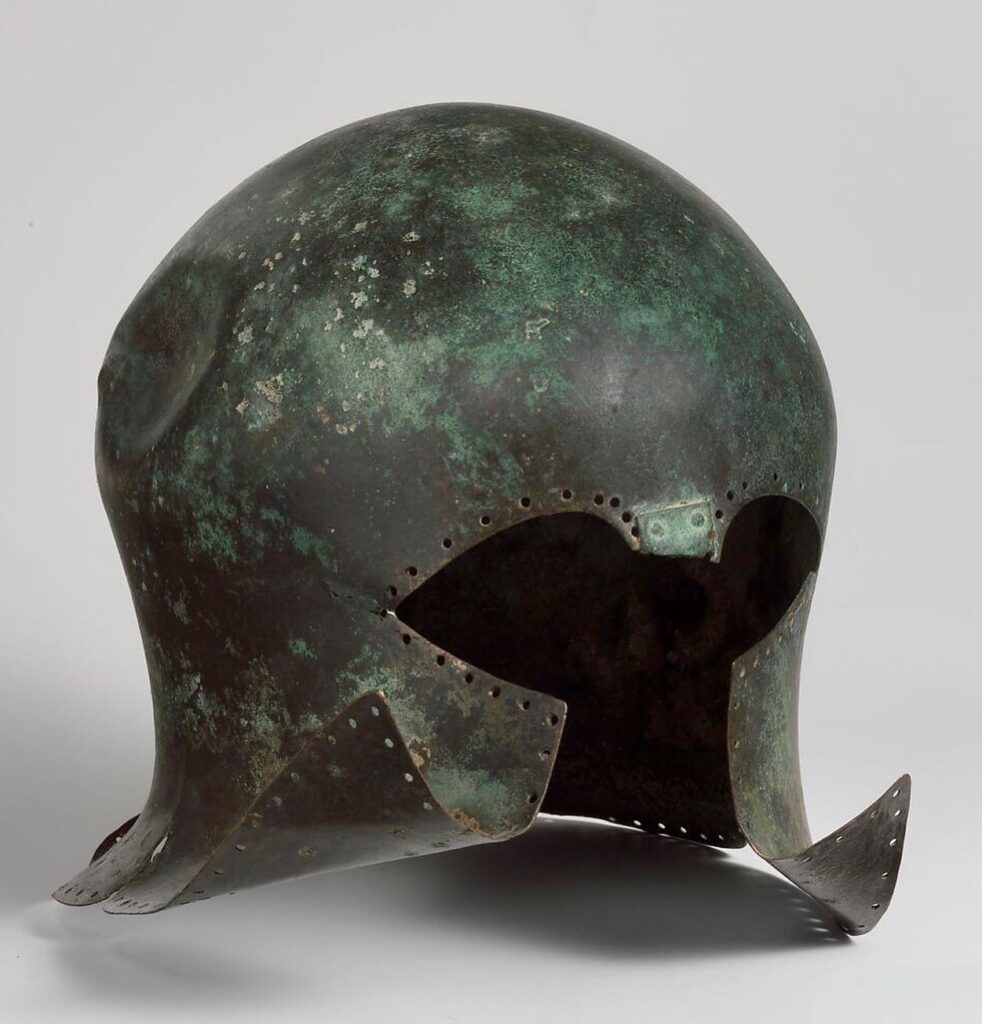

The rationale (perhaps the wrong word) was this: Helmets were valuable, personal, and hugely technically sophisticated hunks of bronze. Dedicating one to a deity after a successful battle was a big deal. Bending up the nose piece (and sometimes too the check flaps) ritually took the helmet ‘out of commission’, a poignant sort of potlash or ritual destruction that increased the value of the dedication, transmuting it from the mortal realm into that of the gods.
It’s a fascinating concept, and the same idea is at work when spear heads and swords were broken or bent before dedication in a sanctuary. These Corinthian helmets are quite early (late 7th, early 6th century B.C.) and are both on display at the Met.

